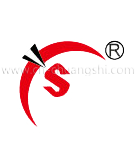Introduction
In 2025, former President Donald Trump’s proposed 145% tariffs on Chinese imports—including soft-close toilet seats—threaten to disrupt U.S. bathroomware markets. With China dominating global production of these high-demand products, American importers face unprecedented cost hikes and supply chain challenges. This article analyzes the policy’s projected impacts and provides actionable strategies for procurement teams to mitigate risks.
Background: Trump’s 2025 Tariff Policy Explained
Trump’s proposed 145% tariff on Chinese goods (Reuters, 2025) aims to pressure manufacturers to relocate production outside China. Soft-close toilet seats, classified under HTS code 3922.90.00 (plastic bathroomware) or 9403.20.00 (furniture parts), are a key target due to their reliance on Chinese factories for cost-efficient assembly and advanced hydraulic components. Analysts warn the tariffs could take effect as early as Q2 2025 if trade talks stall.
Immediate Impacts on Soft-Close Toilet Seat Imports
1. Soaring Costs for U.S. Importers
A 145% tariff would nearly triple the landed cost of Chinese-made soft-close toilet seats. For example, a 50FOBunitwouldcost50FOBunitwouldcost122.50 post-tariff, forcing retailers to raise prices by 80–100% or absorb unsustainable losses.
2. Supply Chain Disruptions
- Delayed Relocation: Shifting production to alternative hubs like Vietnam or Mexico requires 12–18 months to establish compliant hydraulic hinge suppliers and quality control systems.
- Compliance Risks: Stricter “de minimis” rules may block small importers from using duty-free loopholes for low-value shipments.
3. Market Contraction
Mid-priced brands (e.g., 100–100–200 toilet seats) may lose 30–40% of U.S. customers to cheaper non-tariff alternatives, per 2023 IBISWorld data. Luxury brands with “Made in USA” claims (e.g., Kohler) could gain market share.
5 Strategies for U.S. Procurement Teams
1. Diversify Suppliers Rapidly
- Priority Hubs: Vietnam (hydraulic parts expertise), Thailand (plastic molding), and Mexico (USMCA tariff exemptions).
- Due Diligence: Audit suppliers for anti-dumping compliance. For example, ensure Vietnamese factories aren’t using Chinese subcomponents.
2. Negotiate Cost-Sharing Agreements
Partner with Chinese suppliers to split tariff costs. Example:
- Option 1: Suppliers cut FOB prices by 20–30% in exchange for long-term contracts.
- Option 2: Use bonded warehouses in Mexico to reassemble Chinese components, leveraging USMCA’s 62.5% regional value content rule.
3. Shift to Domestic Production
- Reshoring Feasibility: U.S. factories can produce soft-close mechanisms at a 25–35% premium vs. pre-tariff Chinese costs. Partner with automation firms like Bright Machines to reduce labor expenses.
- Government Incentives: Leverage federal grants for reshoring under the 2024 Defense Production Act.
4. Optimize Inventory Management
- Stockpiling: Build 6–9 months of inventory before tariffs take effect.
- Just-in-Time Alternatives: Use nearshoring hubs like Tijuana, Mexico, for faster replenishment.
5. Leverage Tariff Exemptions
- Product Redesign: Modify designs (e.g., replace plastic with FSC-certified wood) to qualify for non-tariff HTS codes.
- Lobbying: Join industry coalitions like the American Bathroomware Coalition to push for exemptions on grounds of no U.S. production capacity.
Long-Term Outlook
By 2026, the market will likely stabilize through:
- Regionalized Supply Chains: Mexico and Southeast Asia replacing 50–60% of Chinese imports.
- Tech-Driven Cost Cuts: AI-driven demand forecasting and 3D-printed hydraulic parts reducing prices by 15–20%.
Conclusion
Trump’s 2025 tariffs will force U.S. buyers to rethink sourcing strategies for soft-close toilet seats. Procurement teams that act swiftly to diversify suppliers, leverage USMCA, and invest in automation will not only survive but thrive in this reshaped market.
